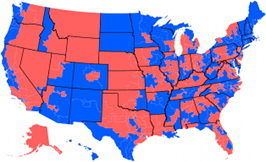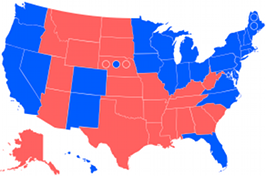It’s all over. The Internet’s dying. They’ve been screaming for a year and a half that in order to Save the Internet, we needed to keep it heavily regulated. Today is the test.
Let me be clear: today is a day that has been a year and a half in the making. In crafting the Restoring Internet Freedom Order, Chairman Ajit Pai and the FCC team have sought to make it an airtight process. They’ve taken their time, held hearings, taken many public comments, dotted every ‘i’ and crossed every ‘t’. Pai does not want this one thrown out of court on a technicality.
So it’s taken about a year and a half since Donald Trump took office, for this key piece of Barack Obama-era regulation to be dismantled fully. But finally, no more will the Internet be subject to price and content controls according to the whims of the FCC.
“What, price and content controls?” you may be asking. “I thought this was about throttling and discrimination.” LOL, no, as the kids say online. The Obama-era regulations were about regulating the Internet the same way we regulate telegraphs and telephones. And yes, kids, Title II of the Communications Act includes both.
In fact, price controls are one of the central elements of Title II (47 USC 201). Except for government. Government is allowed to get free bennies from Title II-regulated carriers, but that’s it (47 USC 210).
Title II would have the government involved in micromanaging the valuation of infrastructure investments in the Internet (47 USC 213).
And get this? Do you want more Internet service? Too bad: Title II bans any building of new lines without regulatory approval (47 USC 214). Imagine government slowing down the Internet from rolling out faster and better to more people!
And yes, content controls are there. Were you a fan of the Communications Decency Act, that tried to regulate obscenity off of the Internet? Well, Title II Reclassification put the Internet under control of 47 USC 223, which bans obscenity over covered carriers. Further, screening of offensive material is part of the law at 47 USC 230.
Title II was a disaster if you want an open and free Internet, innovating for the benefit of all. Today, the day the Internet is freed of Title II, is a good day for everyone who likes an open Internet.


 House of Representatives Swingometer
House of Representatives Swingometer Electoral College Swingometer
Electoral College Swingometer